The Best
The Grass Ceiling by Eimear Ryan (Penguin, €15.99)
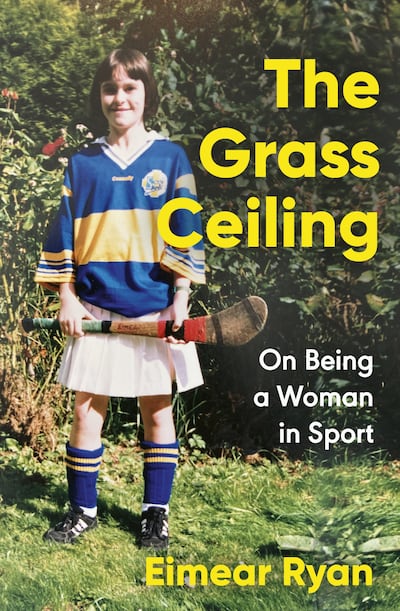
Maybe the most jarring thing about The Grass Ceiling is how revolutionary it feels, even though it is, at brass tacks, simply a memoir of a camogie player. Eimear Ryan is an extraordinary writer but would count herself as having been no more than slightly above average with a hurley. And yet combine the two and you have one of the best, truest sports books in years.
Partly, this is because her insights into what it is to be a female playing sport are so perfectly drawn. Take this passage, on what camogie has done to shape her in her 30 years of playing it.
“You get to think about your body in terms of what it can do, rather than how it looks. You become more engine than ornament. Camogie is the only context in which I have been praised for aggression.”
Some of it is heartbreaking. Ryan was bullied in her teens, in part because she was such an introvert, in part because she found the move from primary to secondary school a trial.
“I don’t know what I would have done if not for sport; if not for the chance to hurt and be hurt, to dominate the person nearest to you, to pour all that anger and shame into hitting the ball as hard as you could.”
There is so much more here, from her slightly empty experience of winning an All-Ireland medal as a Tipperary panellist to her later years moving to a club in Cork and starting afresh in a new dressing room. The scourge of white collars on GAA jerseys (so hard to get fake tan out of), the elaborate dance of how a player tells her team she is pregnant (“It usually starts with a ‘back injury’. Everyone who has been around a while knows what ‘back injury’ means.”)
Ryan writes with such flow and verve and wisdom that no part of the book feels preachy or hectoring. She is not grabbing you by the lapels and upbraiding you for not understanding what sport means to women and girls. She is bringing you into her world and showing you around.
A brilliant, groundbreaking book that will shift your perspective and expand your mind. Everyone should read it.
Showbusiness With Blood by Eamonn Carr (Lilliput Press, €18.00)
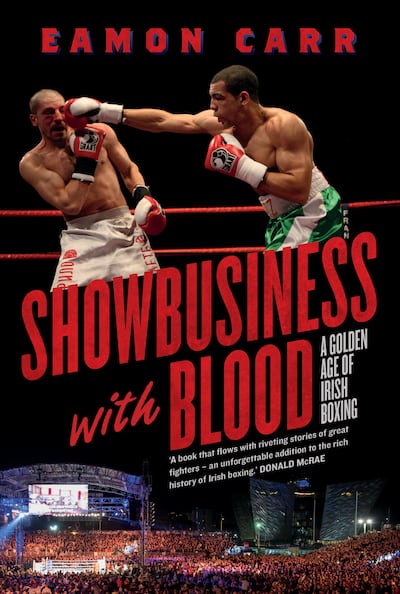
Boxing is such a gift to writers. Nowhere in sport is the distance between the grim realities of participation and the dizzying world of spoof beyond it more pronounced. In there, in that space, that’s where the good stuff is for anyone who gets close enough to it to see it all for what it is.
Eamon Carr has been doing just that for over 30 years. His greatness as a boxing writer clearly stems in part from the fact that he is so much more than a boxing writer. In the introduction, he casually relates the tale of how he and his Horslips bandmate Johnny Fean came up with Dearg Doom. For most of us, that would be more than enough genius for one life.
But Carr’s great love away from music has always been boxing and through his writing with the Evening Herald, he has been present for the rise and fall of every significant Irish fighter since the early 1990s. Michael Carruth is here, Carl Frampton is here, Big Bang Willie Casey, Wayne McCullough, Katie Taylor, Conor McGregor, Andy Lee . . . they’re all in here.
Showbusiness With Blood is so much more than just a run-down of how each boxer came to prominence and what happened to them afterwards. That’s all there, yes, but a lot of it feels secondary somehow. Instead, the book is made up of accounts of those lives as seen through Carr’s eyes. His encounters with the fighters away from the ring. His observations, his wry asides.
“A journeyman fighter in the opening fight on the undercard is not a place you want to be in boxing,” he writes at one stage.
It’s a line that feels like a novel in itself, infused with all the nuance and experience of a writer who has seen the fight game from every angle. And still comes back to it, despite everything.
This Is The Life by Ciarán Murphy (Penguin, €14.99)
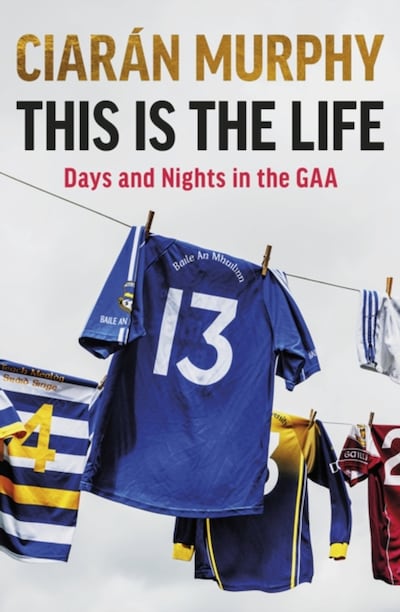
Full disclosure: Ciarán Murphy is both a columnist in these pages and someone your correspondent could be described as being reasonably friendly with. Friendly enough indeed that when he told me around two years ago that he was writing a book, my one piece of advice was to tell him not to. It is as well for everyone that he ignored me.
This Is The Life is a portrait of the GAA as most of the association experiences it. So you have your childhood in a GAA-mad household and you have your teenage years playing with the club and you have your culchie moving to the city and finding the elastic always bringing you back – until such time as it snaps.
You have your culchie transferring to a city club and dealing with the guilt involved, you have your days and nights as a supporter and all the highs and lows that implies. And you have family, always family.
So far, so GAA. But Murphy’s great gift as a storyteller is an ability to see things in the round. He played under-21 for Galway and was a very decent club player but he knew enough about himself to know what was important in life too.
“When the game asked too much of me, I prioritised relationships, or friendships, or work. In the end, I think I played at exactly the level my skills merited. I don’t feel I short-changed myself or anyone else. That in itself is a deeply satisfying thing to be able to say.”
Along the way, he touches on all the little oddities and madnesses that go to make up the GAA. His eye for the absurd creates a reassuring distance from the fray, even as he is so incorrigibly, irredeemably a part of it. It’s a neat trick to be able to pull off and makes for a highly enjoyable jaunt through the national obsession.
A Place To Play by Humphrey Kelleher (Merrion, €19.99)
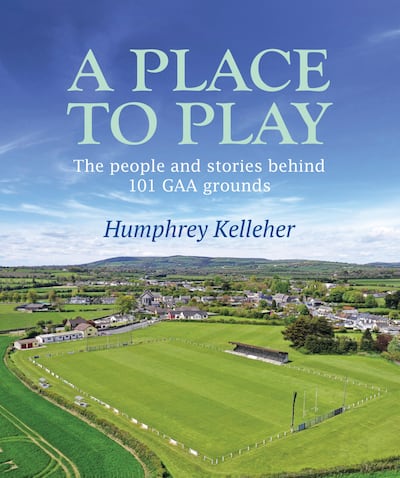
Let’s be honest – this is the sort of book that usually goes into the honourable mentions section of any round-up. That is generally the fate of picture-driven books, regardless of how beautiful the design or how stunning the photography. But Humphrey Kelleher’s decade-long labour of love is a cut above – the kind of book you pick up to casually flick through and yet still find yourself immersed in half an hour later.
It is ostensibly a book about GAA grounds but it is far more than that as well. Kelleher set out with a drone camera and photographed 101 pitches and stadiums around the country. Along with historian Donal McAnallen, he uses the book to tell the stories of the people who bought the land and built the grounds and left these incredible legacies dotted throughout the country.
Not only did he photograph all these grounds, he got their actual, no-guessing dimensions too. And so it may surprise you to find out that the pitch in rickety old Cusack Park in Ennis is 500 square metres bigger than the one in Croke Park. And that the one in Fraher Field in Dungarvan is another 200 square metres bigger again.
This is a marvellous book, full of brilliant historical nuggets, rich in detail and deep with research. A non-negotiable addition to the bookshelf in any GAA house in the country.
Born To Be A Footballer by Liam Brady and Larry Ryan (Eriu, €18.99)
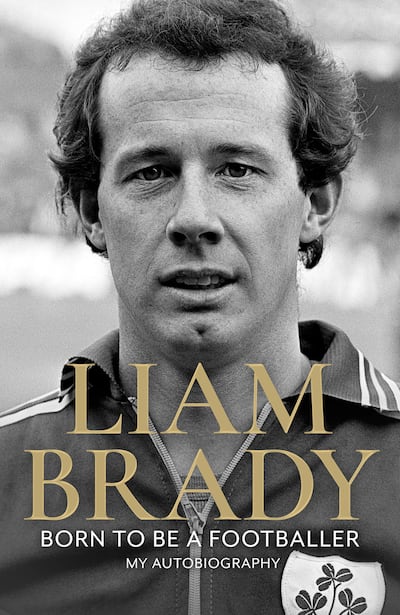
There might not be a more Liam Brady thing than the fact that he sets down a marker early in his second autobiography by taking the lash to his 24-year-old self for writing his first one. So Far, So Good came out in the early 1980s and, from a distance of four decades, Brady sees it now as a sign that he was getting carried away with himself at the tender age of 24. It also landed him in the High Court in London, albeit he won his libel case with a Daily Express reporter.
He has waited until now, at the age of 67 to tell his story properly. And what a story. We sometimes take it for granted, now that Brady is a national elder and it all seems to long ago. But the idea that an Irish footballer could be the matinee idol of first Arsenal and then Juventus feels so ludicrous and beyond realistic now. Yet, for a time, he was one of the greatest players in the world.
Larry Ryan does a terrific job with the text, capturing Brady’s occasionally lugubrious voice while keeping the narrative moving. The shock of finding out that he was being replaced by Michel Platini at Juve feels as real now as it must have been then.
At the same time, he rails against the idea that so much has been made down the years of his famous final-day penalty against Fiorentina which secured the title.
“It’s stupid. What would I possibly have had to gain from knocking it wide? It’s almost insulting that there was so much commentary out there that I might miss it as an act of revenge.”
He did so much more with his career, on and off the pitch. From managing Celtic to overseeing the Arsenal academy to becoming one of the three wise men of the RTÉ panel, along with John Giles and Eamon Dunphy. By any measure, an incredible life. And a book that more than does it justice.
The Rest
Of the various autobiographies around this year, it would be a stretch to say that Carl Frampton by Carl Frampton and Paul D Gibson (Merrion, €18.99) is the best but it’s certainly the juiciest. The fall-out from his bitter split from Barry McGuigan is laid out in excruciating detail and though it’s sad to see what could have been one of the great Irish boxing careers reduced to all that acrimonious nip-and-tuck over money, it’s never less than compelling.
On a completely different autobiographical tip, And A Bang On The Ear by Phil Quinlan and Steve O’Rourke (O’Brien Press, €14.99) is the story of how a Meath teenager went up for a header in 1989 and came down to a life transformed. He ended up in a coma, was given the last rites but recovered eventually and this is his life since. The book is partly an investigation into exactly what happened to him, partly a travelogue, partly a love letter to sport.
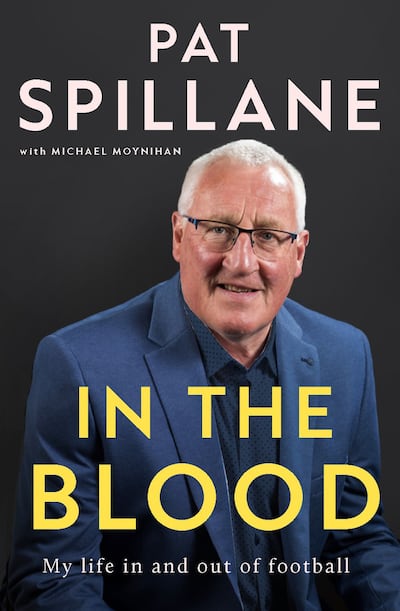
Chasing Sam Maguire by Colm Keys and Dermot Reilly (O’Brien Press, €29.99) is a monumental piece of work, tracing every All-Ireland championship from 1928 to 1977. Keys and Reilly have produced a stunning book, full of titbits and photos and characters that would in most cases have been lost to the ages.
In The Blood by Pat Spillane and Michael Moynihan (Gill Books, €19.99) finds the Kerry legend in slightly wistful mode, amid all the usual bluster and belligerence. Away from his patented railing against the ills of modern football, there’s soulful stuff here too about family, about home, about rural Ireland.
Gaelic games feature in Sport In Modern Irish Life by Paul Rouse (Merrion Press, €15.99), as do most of the sports you can think of. Rouse is a brilliant historian, columnist, podcaster and Offalyman and all shades of him get an outing in this enjoyable collection of essays. Come for the history lessons, stay for the deep personal ruminations on what sports means to us all.
On the rugby front, it’s slim enough pickings from an Irish point of view this year. There are couple of doorstop-sized efforts in the shape of A History Of Rugby In Leinster by David Doolin (Merrion, €28.99) and London Irish: 125 Years of Passion in Exile by Paddy Lennon (VSP, €35.00) that will appeal to specific constituencies. Doolin’s book is a particular treat, since it gives equal weight and attention to rugby in the province beyond its traditional south Dublin hinterland.
Across the water, the rugby fraternity in England fared better this year. The Men In The Arena by Tom English and Peter Burns (Polaris, €22.99) follows the format of their successful Lions books and tells the story of the England team that won the 2003 World Cup. That unique triumph is also the subject of The Boys Of Winter by Lawrence Dallaglio and Owen Slot (Bonnier Books €24.99), a bracing and sometimes pretty harrowing account of what the England players put themselves through back then.
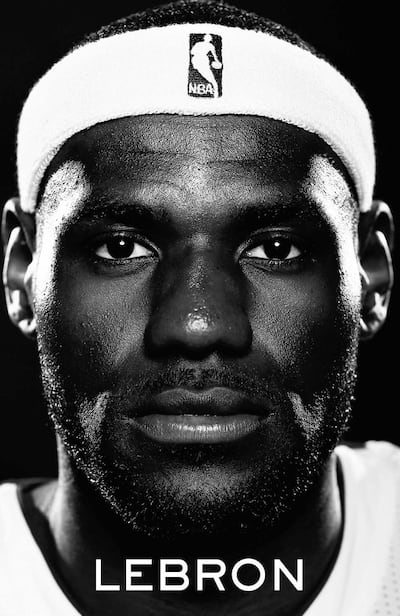
A couple of big beast American biographies are well worth your time. LeBron by Jeff Benedict (Simon & Schuster, €14.99) is the definitive account of the life of one of the world’s most famous and extraordinary people. You’ll never need to read another LeBron book after you’re done with it. Feherty by John Feinstein (Hachette Books, €22.99) takes on a far less celebrated subject – the Co Down golfer-turned-pundit David Feherty – and tells his often chaotic story with real sensitivity and decency.
Staying with golf, LIV and Let Die by Alan Shipnuck (Simon & Schuster, €15.99) is a rollicking, exhaustive and impeccably-sourced breakdown of a breakdown, specifically the one currently being undergone by professional golf. Shipnuck is one of the best – and best-connected – golf writers in America and his account of how LIV Golf and the Saudi government have waged war on an entire sport contains everything from wildly entertaining gossip to dense, buttoned-down business journalism. A cracking reference book for the road ahead, if nothing else.
Finally, and in keeping with tradition, the 2023 version of The Year’s Best Sports Writing edited by Richard Deitsch (Triumph Books, €23.00) can’t not get a shout-out. Go looking for On Punches by Hamilton Nolan, The Keeper by Juliet Macur and King Of The Hill by Jana Meisenholder. You won’t be sorry you did.
The Kids
It has been a phenomenal year for younger sports readers, one to make older ones seethe with envy that this breadth and quality just wasn’t around in our day. We’ll start with The Children Of Croke Park by Michael Foley (O’Brien Press, €12.99) the latest offering in the author’s one-man mission to preserve the memories of those who died in Croke Park on Bloody Sunday in 1920.
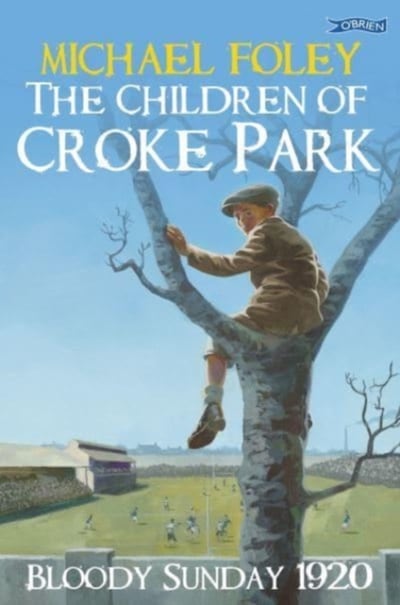
These are the stories of Jerome O’Leary, William Robinson and John William Scott – the three youngest people killed that day – written in the style of a novel while using all the established facts from archives and his own research to carry the tale along. Foley’s quest to keep Bloody Sunday a living, breathing thing in 21st century Ireland is one of the great modern feats of public service journalism and we are all the better as a nation for it.
Rugby Rookie by Gerard Siggins (O’Brien Press, €14.99) is the ninth book in the tremendously popular Eoin Madden series and this one finds our hero as the youngest player on the senior cup team. His ghost this time is George Hall Stack, the first ever captain of Ireland. The brilliance of the series is in the way Siggins is able to combine historical depth with boy’s own adventures and this is no exception.
Finally, a couple of big hitters, in every sense. The Book Of Irish Sporting Heroes, written by Adrian Russell and illustrated by Graham Corcoran (Red Shed, €21.99) is a colourful, encyclopedic collection of just about every Irish sportsperson you can think of, as well as plenty you can’t.
And The Great Irish Book Of Gaelic Games, written by Evanne Ní Chuillin and illustrated by Donough O’Malley (Gill Books, €21.99) is a similarly enormous, sizzlingly-presented monster of a book containing everything a young mind might want to inquire about when it comes to our national games.






















